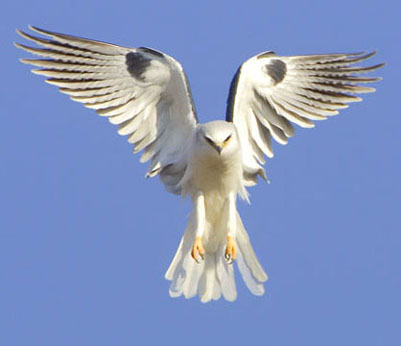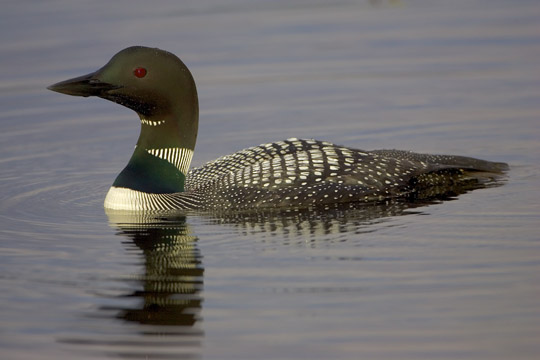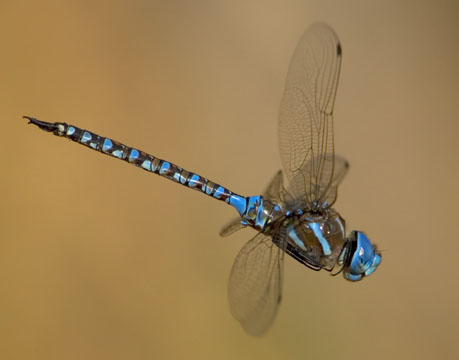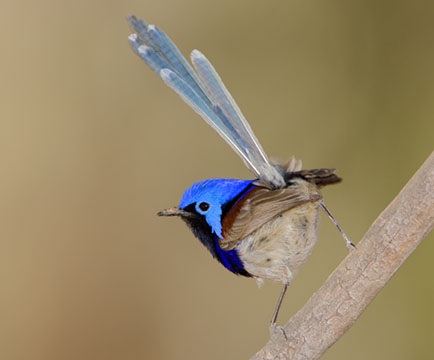 |
 |
| "Big glass:" Super telephotos | ||
 Canon EF 500 mm f4 IS (Mk. I)
Canon EF 500 mm f4 IS (Mk. I)
Quite simply, this is a fabulous wildlife lens, especially with digital SLRs like the Canon 50D or 7D and 1D Mk. IV, with their 1.3-1.6X effective focal length multiplier. It's also terrific for lots of other uses (I imagine many sports shooters love it), even including landscapes on occasion.
I chose this lens over the Canon 600 f4 IS for three reasons: 3 inches shorter, a kilogram lighter, and a few thousand dollars cheaper. The 500 IS is not small (about 3.8 kg) but it is considerably easier to haul around than a 600/4 or 800/5.6, and focuses fairly close (to about 4.2 meters -- which could be improved). The autofocus is lightning-quick and nearly silent, and the IS is remarkably helpful: it allows stable hand-holding (if you're strong) even with a 1.4 X converter, and I've done it in 'emergencies' with a 2X. More routinely, IS helps out with tripods or beanbags (or simply resting the lens on a rock or tree trunk). The Canon 1.4X and 2X teleconverters work very well with the 500 IS -- the 2X supports autofocus with high-end Canon bodies -- and the lens is very solidly built. The optics are superb in all respects: no distortion, razor-sharp, very little flare, excellent color. With extension tubes and a converter, it even does a credible job as a long-distance semi-macro lens for shy subjects like dragonflies (go to the 'telemacro' page for more on how to do this). A few small gripes: the off-white finish scratches easily; I use neoprene covers to provide some bump and scratch protection. The tripod collar and foot are smaller than on many big telephotos but still stick out too much for an easy backpack fit. I replaced the stock foot with a smaller and lighter one with integral Arca-Swiss mount. Finally, the placement of the focus lock buttons is awkward: too far forward and hard to locate when one's eyes are at the viewfinder. With this lens (or any supertelephoto) you need an excellent tripod and head to get the best possible images, especially when light is low and exposures are long. Stabilization technology is wonderful, but it has its limits -- and although it sounds trivial, it's often a great relief to be able to put the rig down on firm support and take a breather from carrying it. For years I used a Gitzo 1325 carbon-fiber tripod, topped with an Arca or Kirk ball head and a Wimberley Sidekick gimbal mount for quick, easy pointing and tracking. Eventually I replaced the ball head+Sidekick combination with a Wimberley Head II, which is less versatile but about a pound lighter, with a more solid feel and greater vertical swing range. More recently the Gitzo tripod was replaced with an easier-to-use RRS equivalent. In good light, it's possible to hand-hold the 500 IS, especially if you can brace it on a firm support like a car window, rock, tree, etc. For images of flying birds, 'pure' hand-holding is possible at high shutter speeds, and is often the best solution -- even a gimbal tripod head has limits in how readily it can be panned or how well it can point upwards, so for targets high in the sky, hand-holding may be the only option.
|
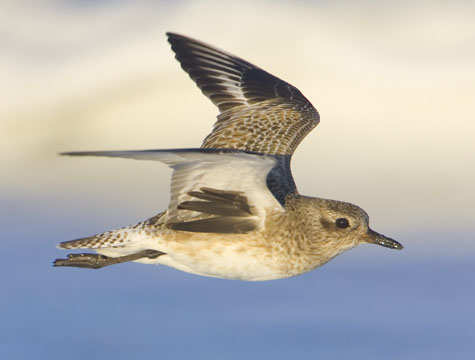
| |
|
To get an idea of the sheer physical size of these lenses, look at these pages from The Digital Picture:
|

